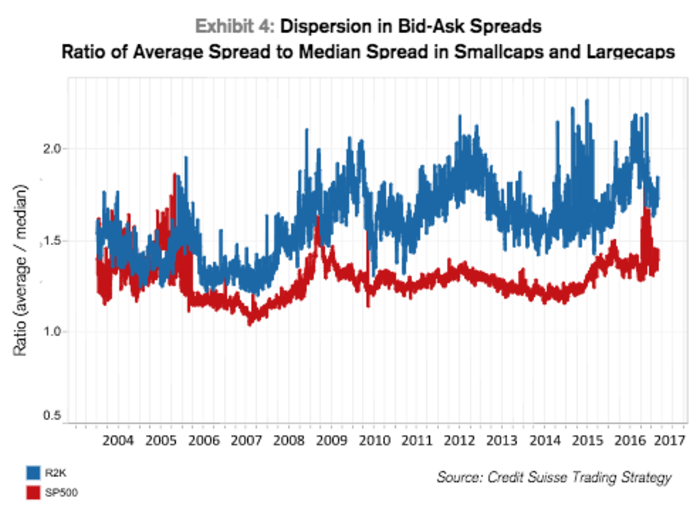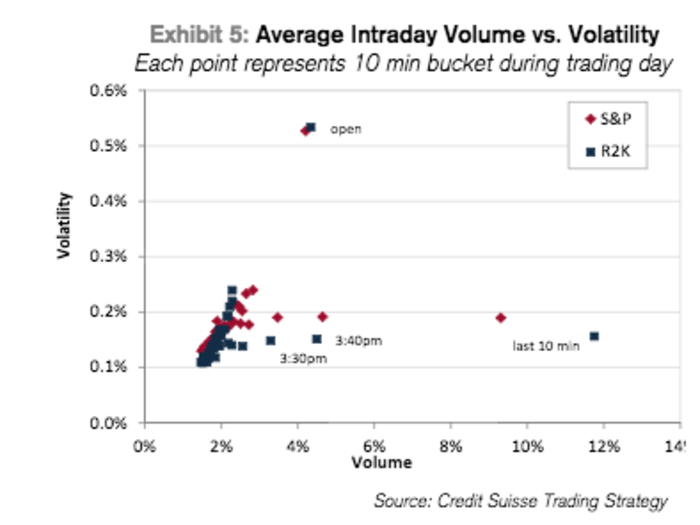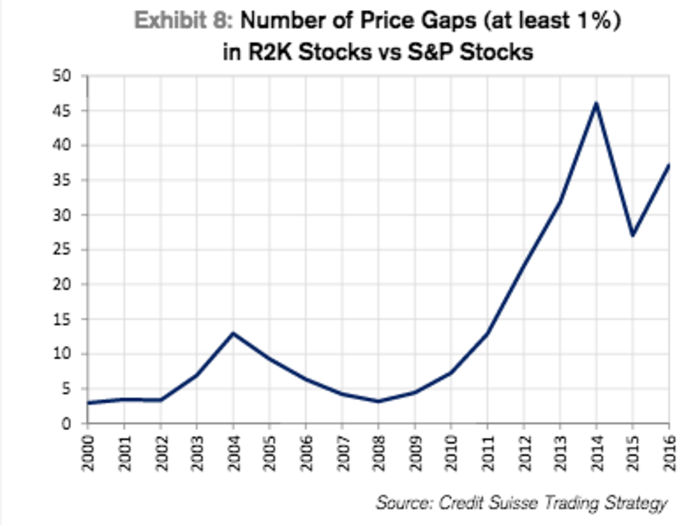- Home
- stock market
- CREDIT SUISSE: Here's how high-frequency trading has changed the stock market
CREDIT SUISSE: Here's how high-frequency trading has changed the stock market
Higher trading volumes

Bid-ask spreads for large cap stocks have tightened

A bid-ask spread is an important concept on Wall Street. It refers to the difference between the price at which someone wants to buy an asset (bid price), and the price at which the seller wants to sell that asset (ask price). The tighter the better, in theory.
The rise of HFT has seen a divergence between bid-ask spreads for large cap stocks (they've tightened) and small caps (they've widened), suggesting a concentrating of trading in the most liquid, biggest stocks.
Credit Suisse said:
"Bid-ask spreads for largecaps and smallcaps generally move in the same direction, meaning they both widen or narrow in accordance with volatility. However, we find that the dispersion in spreads between the most liquid and least liquid stocks has grown since mid-2009."
There is more volatility in large cap stocks at the end of the trading day

Large-cap stocks and small-cap stocks also see the most volatility at different times of the day.
"At the beginning of the day, small caps tend to be more volatile as they take a bit longer to establish fair price," Credit Suisse said. "But, at the end of the day, they actually have slightly lower volatility than large caps."
The note said:
"Small caps do seem to experience larger price gaps, yet they tend to have less of the small fluctuations; largecaps, by contrast, with their large presence of market makers, may experience something like “flickering quotes” as the price bounces rapidly between the bid and ask, particularly at the end of the day.
"Both of these phenomena may be attributed to HFT – their absence in the case of smallcaps and busy back-and-forth trading in the case of largecaps."
There are a small number of price gaps, or big jumps, in large cap stock prices

High-frequency traders often seek to benefit from inefficiencies in the market, stepping in when something has moved too far.
As a result, "there are fewer instances of prices gapping in stocks that generally have a larger HFT presence," according to Credit Suisse. In other words, those stocks have fewer extreme up and down ticks.
"For several years going into 2009, when HFT hit its peak, the ratio of gaps in small caps to large caps remained around five gaps in a small cap stock for everyone in a large cap," the bank said.
"Beginning in 2010, though, and largely continuing through today, as we saw some HFT leaving the market and others congregating in largecap land, that ratio increased considerably," the bank added.
Popular Right Now
Advertisement